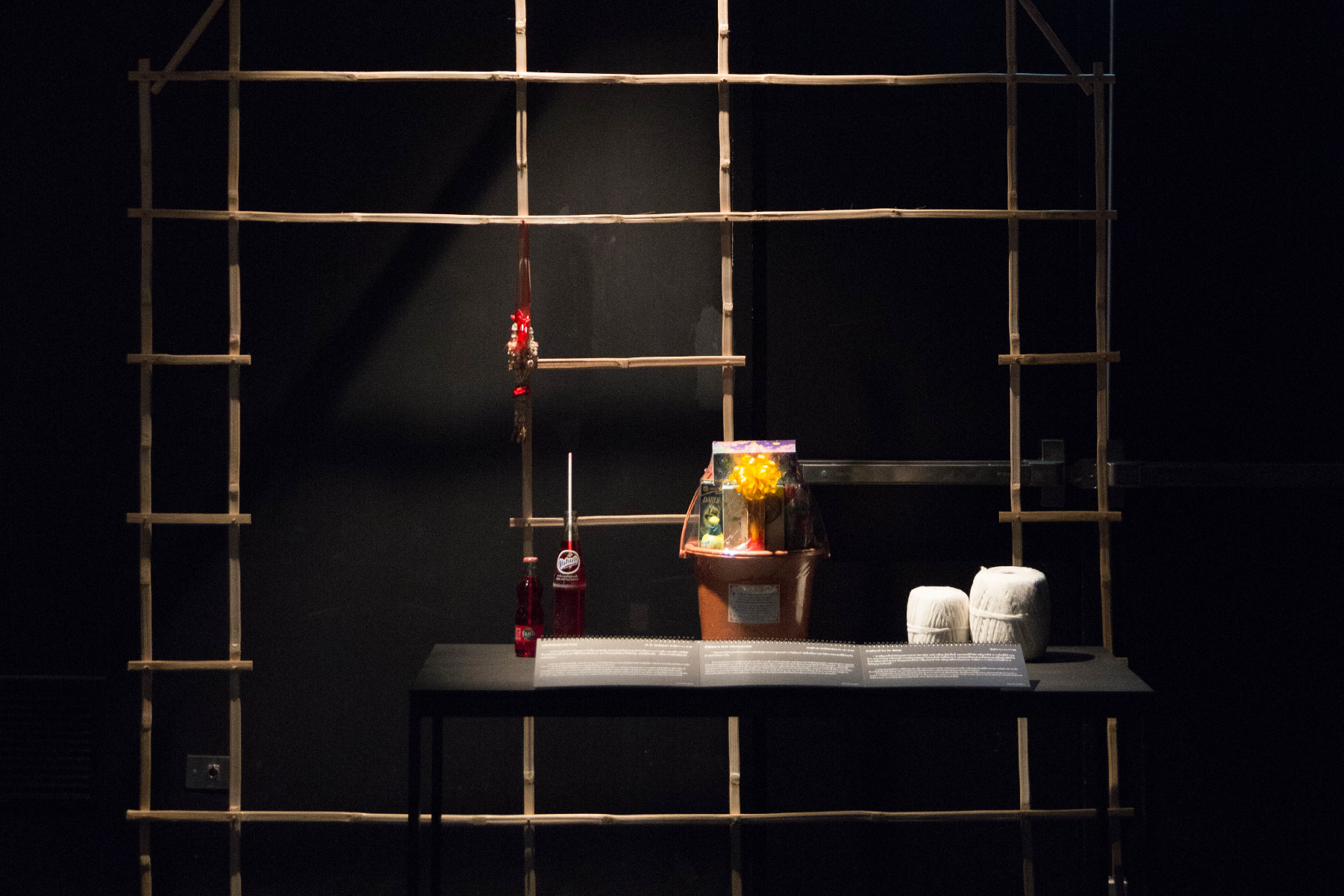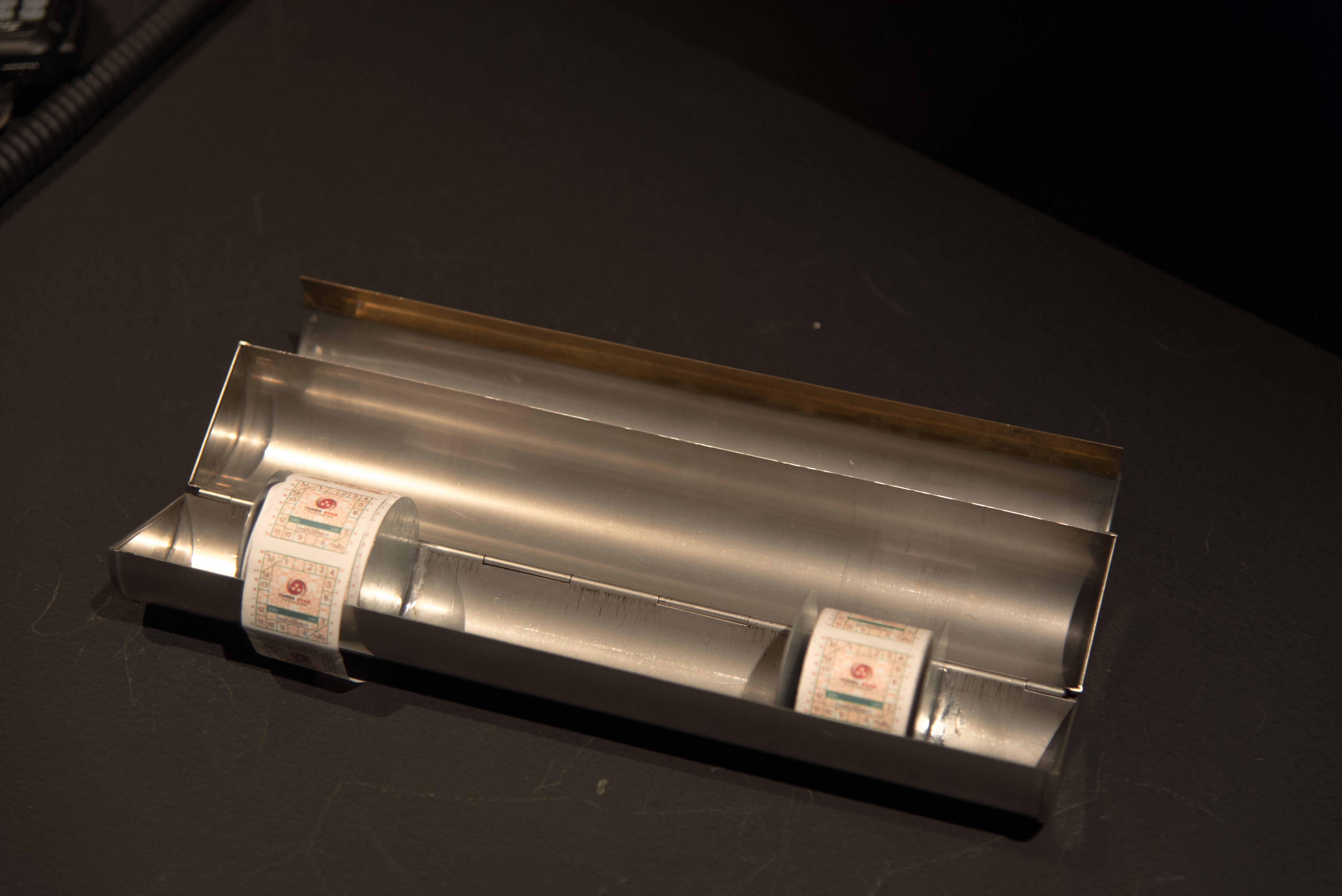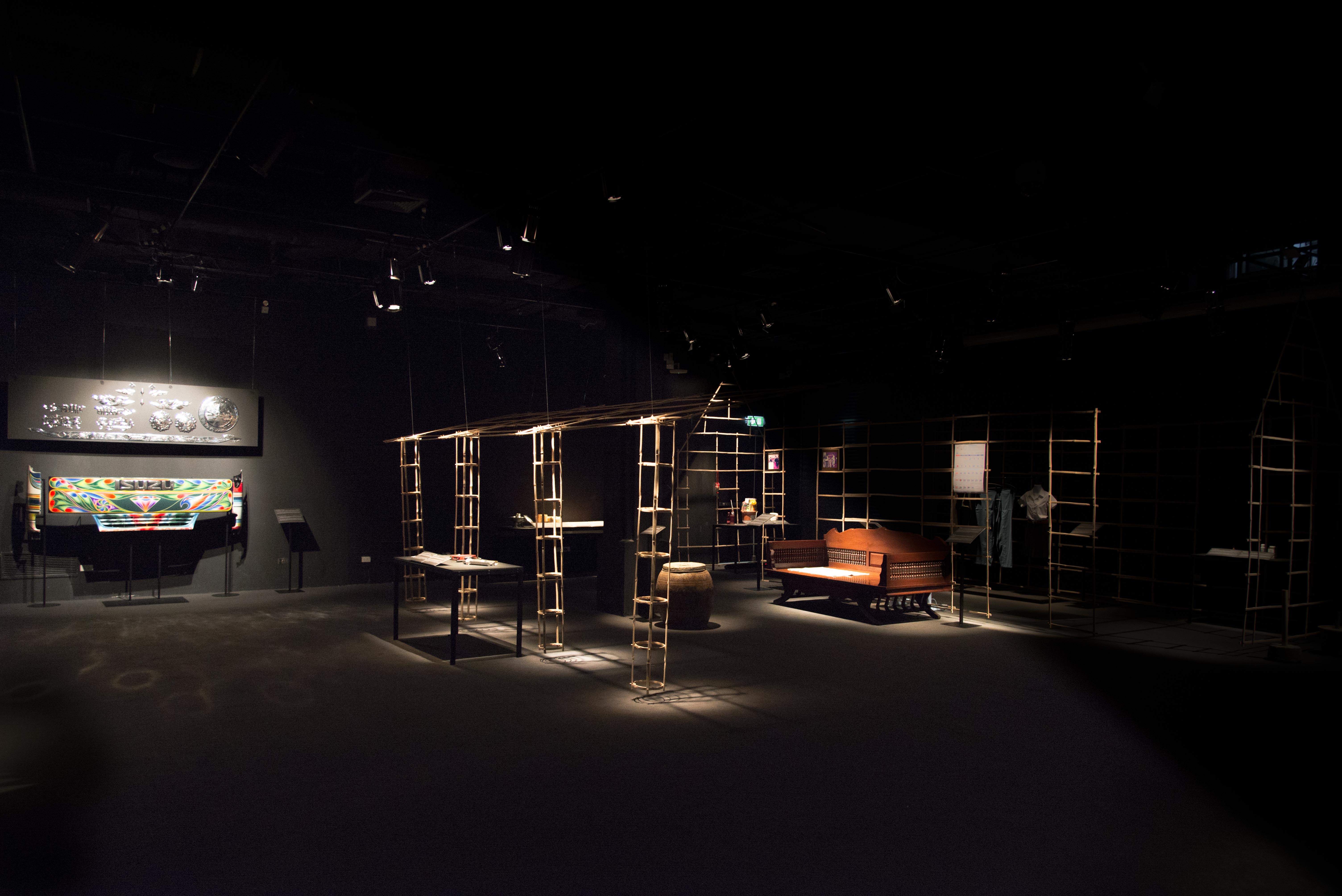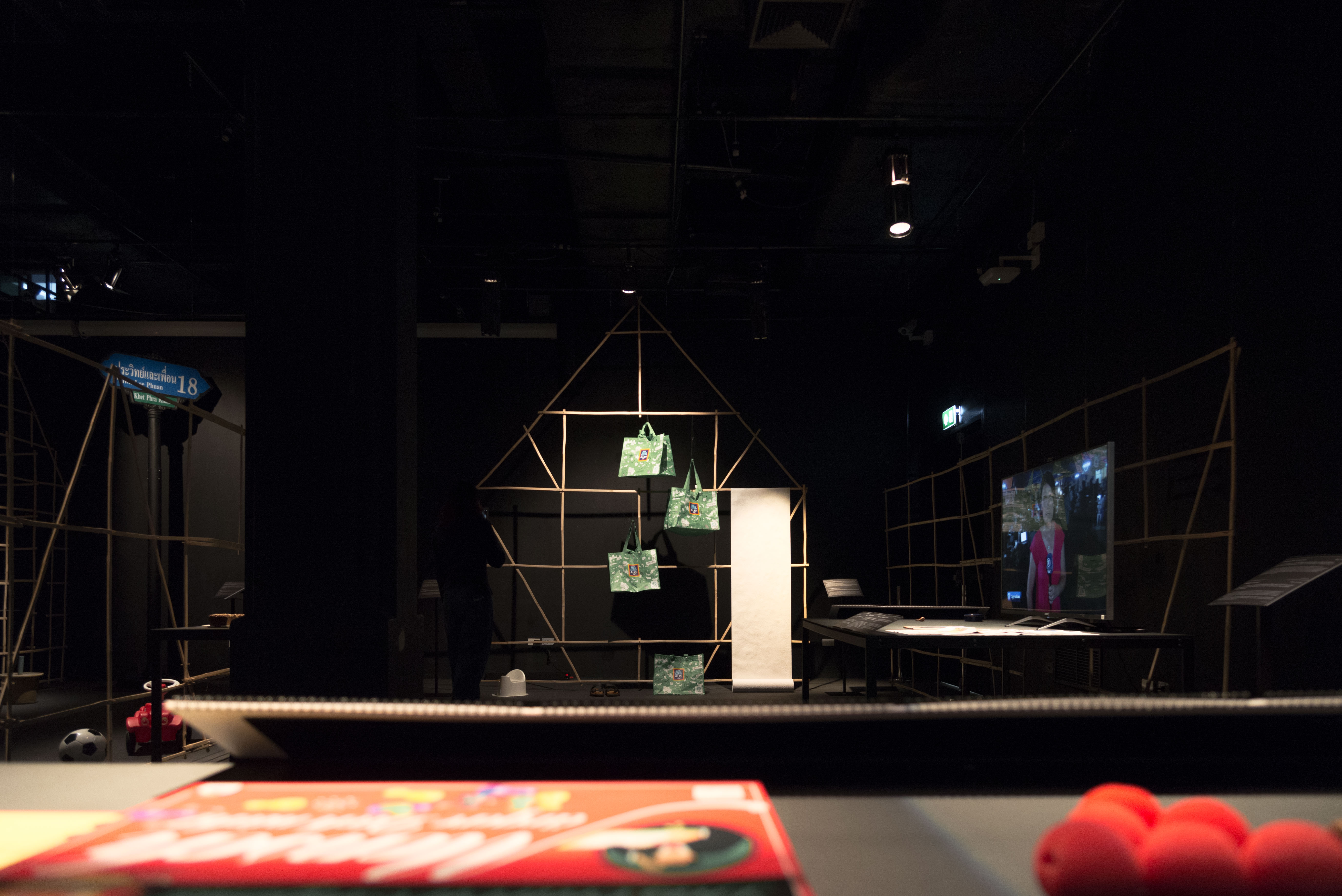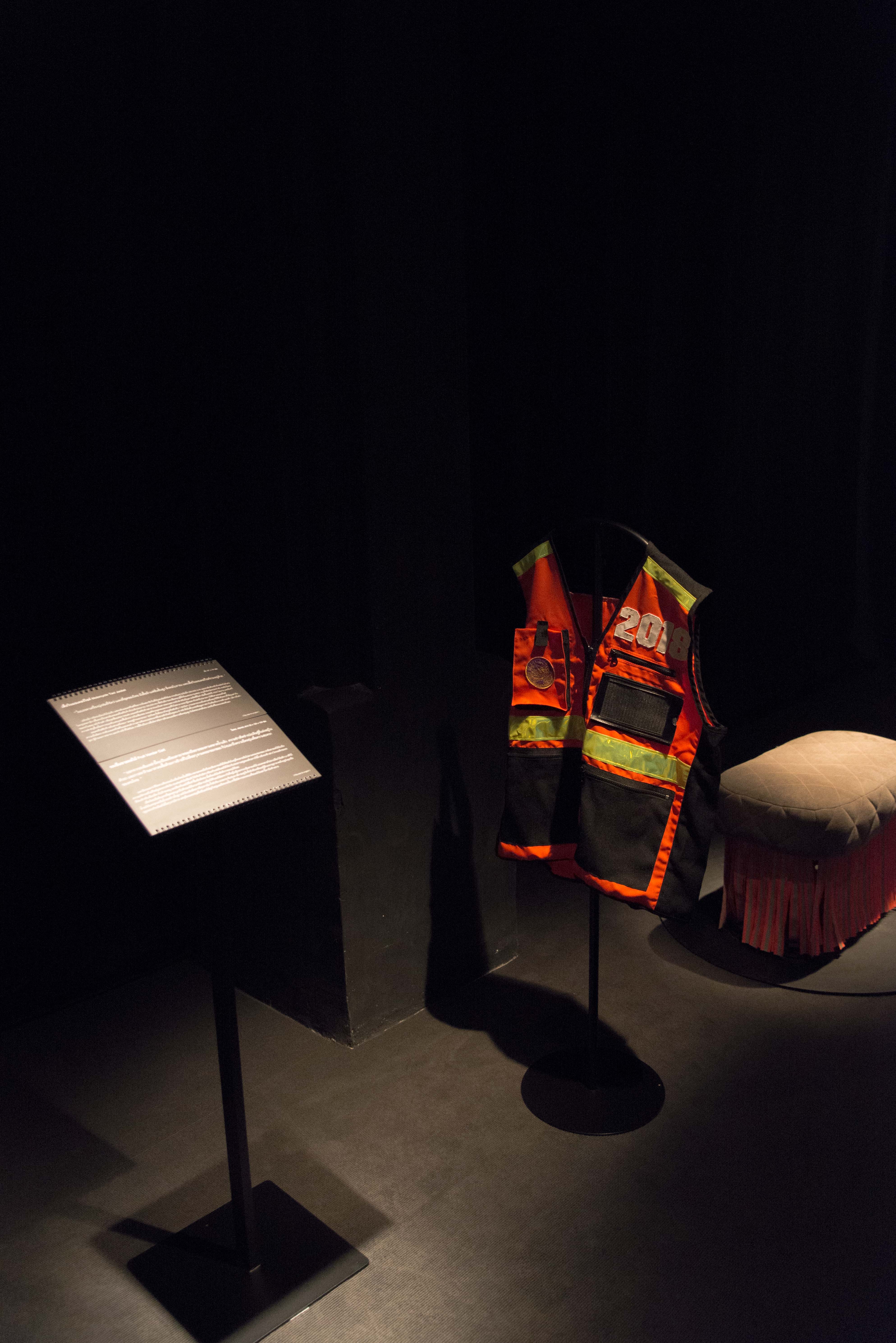CO-CURATED BY MARTIN RENDEL, PIBOON AMORNJIRAPORN OF PLURAL DESIGN, AND THE AUTHOR OF VERY THAI, PHILIP CORNWEL-SMITH, ‘INVISIBLE THINGS’ INTRODUCES US THE STEREOTYPICAL IMAGES OF AND THE TRUTH BEHIND LIFESTYLE AND CHARACTERISTICS OF THE THAIS AND GERMANS THROUGH A SELECTION OF MUNDANE OBJECTS WE ENCOUNTER EVERYDAY
TEXT: CHATCHAVAN SUWANSAWAT
PHOTO: NAPAT CHARITBUTRA
(For English, please scroll down)
นิทรรศการ ‘สิ่งที่มองไม่เห็น’ (Invisible Things) ซึ่งได้ Philip Cornwel-Smith ผู้แต่งหนังสือ Very Thai: Everyday Popular Culture (2014) มาร่วมเป็นภัณฑารักษ์ เป็นนิทรรศการที่ว่าด้วยวัตถุเครื่องใช้ในชีวิตประจำวันจำนวน 50 ชิ้น ที่เราคุ้นชินจนแทบมองไม่เห็นคุณค่าและมิติวัฒนธรรมที่ซ่อนอยู่ เช่น กระป๋องแป้งตรางู กระติ๊บข้าวเหนียว ซองมาม่า หรือกางเกงเล ซึ่งตั้งใจให้มีความแตกต่างไปจากการนำเสนอในหนังสือ Very Thai ที่มีเนื้อหาเป็นการมองในแบบวัฒนธรรมป๊อบมากกว่า ในขณะเดียวกันตัวนิทรรศการเองยังถือเป็นการอัพเดทมุมมองของ Cornwel-Smith ในปัจจุบันอีกด้วย โดยนิทรรศการ ‘สิ่งที่มองไม่เห็น’ นั้นกำลังจัดแสดงอยู่ที่ ห้องแกลเลอรี ชั้น 1 TCDC กรุงเทพมหานคร ตั้งแต่วันที่ 13 มิถุนายน จนถึง 15 กันยายน นี้
จริงๆ แล้วนิทรรศการ ‘สิ่งที่มองไม่เห็น’ ได้เคยถูกจัดแสดงไปแล้วเป็นครั้งแรกที่ TCDC เชียงใหม่ เมื่อช่วงปลายปีที่ผ่านมา แต่แน่นอนว่าบุคคลที่ผูกพันกับหนังสือ Very Thai นั้นส่วนมากมักอาศัยอยู่ที่กรุงเทพฯ เช่นเดียวกับตัวผู้เขียนเอง ดังนั้นการที่นิทรรศการนี้มาปรากฏที่กรุงเทพฯ จึงเป็นอะไรที่ค่อนข้างน่าตื่นตาตื่นใจ จนถึงขนาดที่วันเปิดนิทรรศการเป็นวันแรกนั้นมีผู้สนใจเข้าร่วมเป็นจำนวนมาก ทำให้เกิดคำถามขึ้นมาเล็กๆ ว่าทำไมถึงไม่เปิดตัวที่กรุงเทพฯ เสียก่อนเลย
การกลับมาทำงานในรูปแบบนิทรรศการคราวนี้ อาจจะไม่ได้ทำให้คนไทยผู้ติดตามผลงานของ Cornwel-Smith ได้เต็มอิ่มและรู้สึกฟินไปเนื้อหาความเป็นไทยตามสไตล์ Very Thai ได้ขนาดนั้น เพราะว่านิทรรศการมีความตั้งใจหารพื้นที่ครึ่งนึงให้กับเนื้อหาความเป็น Very German ตามภารกิจของสถาบันเกอเธ่ผู้สนับสนุนหลักของนิทรรศการนั้นเองด้วย จนจำเป็นต้องมีคีย์เวิร์ดประจำของงานว่า “อะไรคือความเป็นไทย และอะไรคือความเป็นเยอรมัน?” ซึ่งนั่นก็ทำให้เห็นว่าการคิวเรตเนื้อหาของนิทรรศการนี้ให้เชื่อมโยงกันนั้นไม่ใช่เรื่องง่ายนัก จนของจำนวน 25 ชิ้นที่เป็นไทย และของอีกจำนวน 25 ชิ้นที่เป็นเยอรมัน จำต้องถูกแยกพื้นที่การจัดวางในห้องจัดแสดงด้วยการจำลองฟอร์มบ้านของทั้งสองเชื้อชาติขึ้นมาด้วยเส้นไม้ไผ่ที่ถูกตอกเป็นชิ้นๆ กลายเป็นเส้นที่เหมือนโครง wireframe โดยมีสิ่งของในชีวิตประจำวันของทั้งสองชาติถูกแยกวางกันไปในบ้านไทยและบ้านเยอรมัน
ในการนำเสนอนิทรรศการด้วยบ้านไม้ไผ่นั้น พิบูลย์ อมรจิรพร จาก Plural Design ซึ่งเป็นหนึ่งในผู้ร่วมออกแบบและคิวเรตนิทรรศการในครั้งนี้ ได้กล่าวถึงไอเดียที่ว่า ไม้ไผ่นั้นเป็นวัสดุภูมิปัญญาที่คนไทยคุ้นเคยจากเครื่องจักสานสารพัดประโยชน์ จึงต้องการใช้ไผ่เป็นวัสดุหลักในการร้อยเรื่องทั้งหมด ในขณะที่บ้านไม้ไผ่นั้นไม่ได้ใช้วิธีการสานเพื่อสร้างเป็นบ้านจริงๆ ทำให้สถาปัตยกรรม wireframe ที่ดูเหมือนไดอะแกรมที่ตรงไปตรงมานั้นดูไม่เรียบง่ายเท่าสิ่งของที่คัดเลือกวางไว้
เมื่อเริ่มเดินเข้าไปสู่ห้องจัดแสดง ความน่าสนใจแรกของนิทรรศการ ‘สิ่งที่มองไม่เห็น’ ก็คือตัวเนื้อหา (text) ประกอบการเล่าเรื่องของสิ่งของธรรมดาๆ ที่ถูกจัดแสดงนั้น ได้ถูกเล่าในมุมที่เราไม่คาดคิด แถมยังคมคายจนทำให้เราคนไทยเจ้าของสิ่งของนั้นต้องรู้สึกสะดุ้งและอมยิ้มอยู่ในใจได้ไม่น้อย อย่างเช่นคำประกอบซองมาม่าที่ว่า “นักเศรษฐศาสตร์ไทยใช้ ‘ดัชนีมาม่า’ ในการพยากรณ์เศรษฐกิจ… ยามเศรษฐกิจดี ยอดขายมาม่าจะลดลง แต่ยามเศรษฐกิจถดถอย ยอดขายมาม่าจะเพิ่มขึ้น” หรือว่าคำประกอบถังสังฆทาน “วัฒนธรรมไทยเป็นเรื่องของความสัมพันธ์มากกว่ากฎเกณฑ์ การให้ของกำนัลจึงเป็นการทำให้ความตกลงที่มีร่วมกันดำเนินไปโดยราบรื่น… พระกับฆราวาสก็ต่างพึ่งพาซึ่งกันและกัน” ซึ่งสิ่งของชิ้นหนึ่งที่ถูกนำมาจัดแสดงและได้ทำหน้าที่สร้างความเชื่อมโยงเรื่องราวของเยอรมนีและไทยได้ดีที่สุด ก็คือ ‘ขวดน้ำแดงแฟนต้า’ ที่กล่าวว่าถูกผลิตขึ้นครั้งแรกในเยอรมนี แต่กลับกลายเป็นของที่มานิยมใช้ไหว้เจ้ากันในประเทศไทยนั่นเอง
ในขณะที่เมื่อเราเดินถัดไปในบ้านเยอรมัน เราก็จะพบกับสิ่งของในชีวิตประจำวันของคนเยอรมันที่เราค่อนข้างจะไม่สะดุดสะดุ้งและอมยิ้มเท่า อาจด้วยเพราะไม่ได้เข้าใจรากฐานความเป็นเยอรมันมากพอนัก แต่นั่นก็ทำให้เรามีความตั้งใจที่จะเรียนรู้ว่าสิ่งเหล่านี้คงจะให้ประสบการณ์แบบเดียวกับบ้านไทยหากเราเป็นคนเยอรมัน อย่างเช่นการนำทีวีมาเปิดรายการข่าวเยอรมัน ‘Tagesschau’ (ที่แปลว่าย้อนดูวันนี้) ในนิทรรศการ ซึ่งดูๆ ไปแล้วก็อาจจะเหมือนกับรายการ ‘เรื่องเล่าเช้านี้’ ของบ้านเราก็เป็นได้
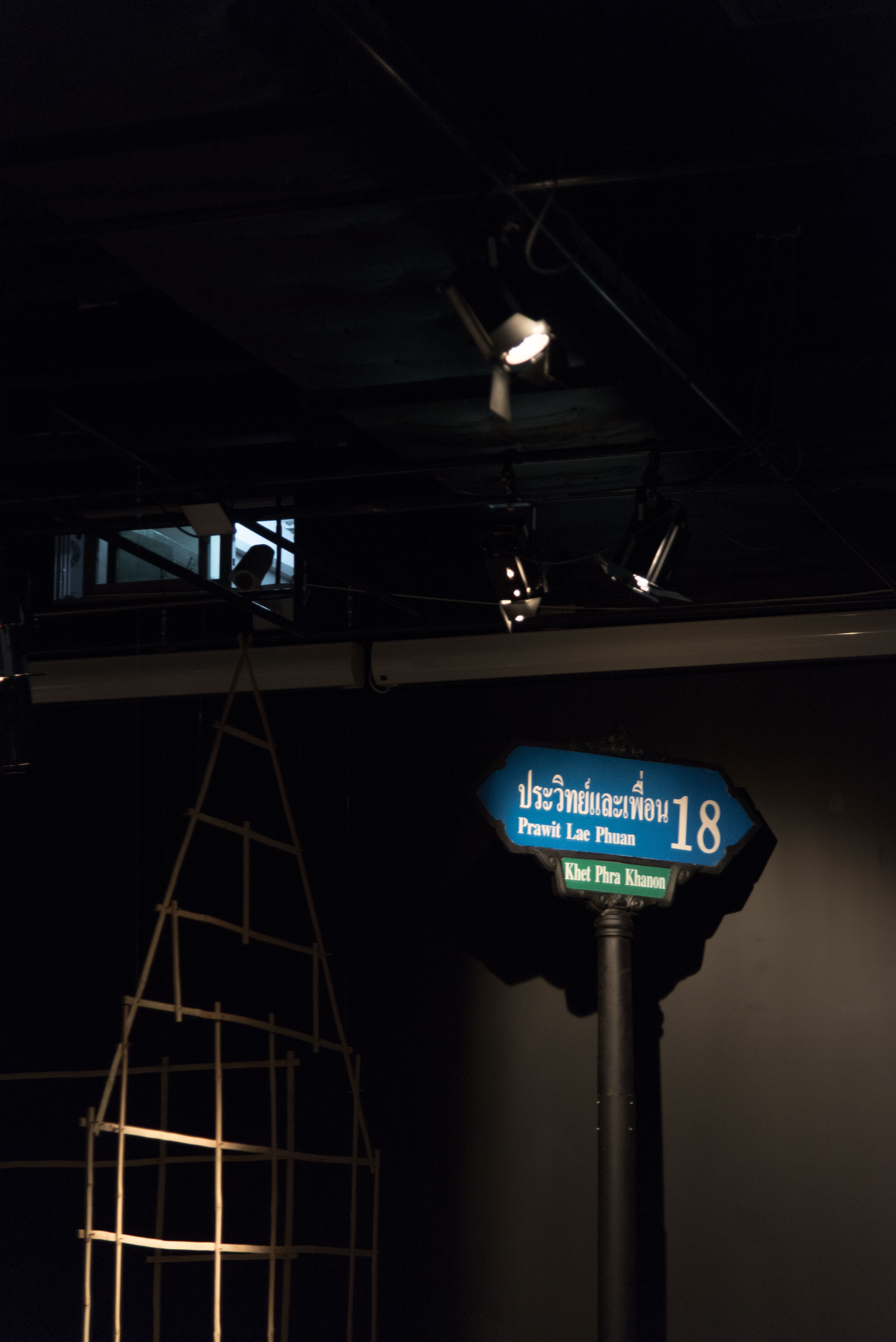
แม้ว่านิทรรศการ ‘สิ่งที่มองไม่เห็น’ นี้จะเน้นไปที่การจัดแสดงสิ่งของประกอบคำอธิบายควบคู่ให้เราได้รับประสบการณ์จากการได้เห็นของจริงๆ รวมทั้งหยิบจับได้ แต่การมีหนังสือสูจิบัตรประกอบนิทรรศการด้วยนั้น เราพบว่าประสบการณ์จากการเปิดสูจิบัตรนั้นก็ค่อนข้างให้ประสบการณ์ที่ไม่ต่างกับการเดินดูของจริงๆ สักเท่าไรในงานนัก อีกทั้งการที่ตัวนิทรรศการเองนั้นค่อนข้างมืดและใช้ตัวหนังสือสีขาวบนพื้นหลังสีดำ ก็อาจจะทำให้เกิดปัญหากับคนสายตาสั้นได้เช่นกัน แต่ถึงอย่างนั้น ‘สิ่งที่มองไม่เห็น’ ก็นับว่าเป็นนิทรรศการที่ควรค่าแก่การค่อยๆ เดินสำรวจ ไปพร้อมๆ กับตั้งคำถามถึงความเป็นไทย (และความเป็นเยอรมัน) กันอีกครั้ง ในเวลา 15 ปีให้หลังจากที่หนังสือ Very Thai ตีพิมพ์ออกมา

‘Invisible Things,’ an exhibition co-curated by Philip Cornwel-Smith, the author of Very Thai: Everyday Popular Culture (2014). The exhibition showcases 50 everyday objects that are so familiar to us they have become overlooked, and yet they hold some of the most definitive elements of Thai popular culture. Among some of these objects are the Snake brand powder metal box, the woven container for sticky rice, the MaMa instant noodle packet or the iconic fisherman pants. Cornwel-Smith intended to present the objects differently than in his book, which drew extensively from pop culture, and to represent an ‘updated’ version of his perspective. ‘Invisible Things’ will run from 13 June to 15 September 2019 in the gallery room on the first floor of TCDC, Bangkok.
‘Invisible Things’ was held for the first time at TCDC Chiang Mai at the end of last year, but most of Very Thai’s reader, like myself, lives in Bangkok. The exhibition coming to Bangkok caused quite an excitement; the opening day alone saw so many visitors it begs the question of why it wasn’t launched here in the first place.
Cornwel-Smith’s return to exhibiting his works may not satisfy the Thai readers who were ravished by the contents of Very Thai since part of the exhibition space is devoted to the Very German content as was the intention of the Goethe Institut, a major sponsor of the event. The shared space gave rise to the key question of the event: “What is typical ‘Thai’ and what is typical ‘German’?” The question is suggestive of the difficulty in relating the contents from the two parts of the exhibition, a difficulty that has resulted in the 25 Thai artifacts and the 25 German ones being exhibited separately. The exhibition space was divided by way of creating forms of Thai and German houses using bamboos; the houses were then filled with everyday objects from the respective countries.
In presenting the exhibition using a bamboo house, Piboon Amornjiraporn from Plural Design, who was one of the designers and curators of the exhibition, has said that bamboo is a multi-functional material that is familiar to Thai people, which is why he has chosen to use it as the main construction material as a means to string the stories together cohesively. However, the bamboo house wasn’t constructed using the weaving technique like the construction of a real house, which means that the wireframe architecture isn’t as simple-looking as the objects it contains.
When entering ‘Invisible Things,’ the first point of interest is the texts that accompany the exhibition, which tell the stories of the ordinary objects in surprising, witty and delightful ways. For example, “Thai economists use the ‘MaMa Index’ to predict the state of the economy…when the economy is going well, the sales for MaMa (instant noodles) will decrease and when the economy is not doing too great, MaMa sales would go up.” The text that accompanies the Buddhistic offerings writes, “Thai culture revolves around relationships more than it does to rules, exchanging gifts and gratuities is thus an agreement that keeps everything running smoothly…the monks and the temple-goers both depend on one another.” One of the objects in the exhibition that best link Thai and German cultures is the red Fanta bottle that was first produced in Germany but became popular in Thailand for its use as an offering to the spirits.
When entering the German house, one will be confronted with the everyday objects that may not delight in the same way that the Thai objects do, given there isn’t a deep-rooted understanding of their part in German culture. Nevertheless, that’s all the more an encouragement to understand how each of the items may give a similar experience as the one we have with our local objects. For instance, if we were Germans, flipping to ‘Tagesschau’ (a word that means ‘rewatch today’) on T.V. might be similar to watching ‘Morning News’ on Channel 3.
Although ‘Invisible Things’ focuses on exhibiting objects with stories along with delivering a hands-on experience, the publication that accompanies the exhibition provides a very similar experience to walking through the show itself. In addition, the darkened room and white texts on black walls are not the best combination for the short-sighted. That being said, ‘Invisible Things’ is an exhibition that’s worth the wait, walk through it and question Thai-ness and German-ness again for the first time in 15 years since the publication of Very Thai.

